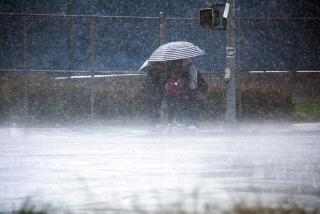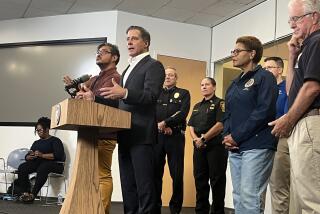Editorial: Keeping L.A. schools closed: An agonizing but necessary decision
- Share via
After a disappointing spring in which kids at home learned far too little, the Los Angeles Unified School District will keep its campuses closed for at least the start of the new school year.
The surge in Los Angeles County COVID-19 cases has been too big for the schools to work around, according to Superintendent Austin Beutner. As good as even a partial return to school would have been, for even just the youngest of the students, Beutner worries that the county could be headed for another lockdown, which would be the most disruptive outcome of all.
He has a point. Los Angeles County isn’t like the countries in Europe that have been reopening schools successfully, with no sign that they have been significant sources of disease transmission. Those have much lower COVID-19 rates that are staying level or trending slightly downward.
Still, there’s no point pretending that L.A.’s half-a-million students are well served by online lessons. (San Diego Unified, the second biggest school district in California, also announced it would go online-only this fall.) Though L.A. Unified put in real effort during the spring to make remote education a viable way to learn, the sudden shift did not overall go well in this or other large urban districts. A side agreement with the L.A. teachers union gave students too little instructional time, and too much of that instructional time was of low quality. Some teachers put their all into it, and their students benefited; others handed out worksheets.
The confusion and disparities were the result of an emergency situation that left almost all sectors of society in a tizzy, including supermarket supply chains and hospitals. Teachers had their own children at home to take care of and others were new to and uncomfortable with remote lessons. Students stopped even logging in, and the concept of meaningful grades for achievement was dropped.
Though lessons might have to be remote to start the year, a return to anything like this past spring is unacceptable. The details of the new school year have not been revealed, but they must include at least this much: Teachers must return to live lessons for a significant portion of each day. The total amount of teaching time should be similar to what it would be in the classroom, and worksheets, lesson planning or grading homework should not be counted as instructional time. United Teachers Los Angeles would be doing a tremendous disservice to students and the public if it fails to readily agree with these standards.
For high school students, the district should look into offering some of the quality online courses offered by educational companies. These don’t provide the same experience as regular in-person classes, but many of them are rigorous and engaging. Teachers can supplement those with tutoring and enriched assignments.
Under new state law, attendance will be taken and grades given. California is in bad shape, but at least this is no sudden panic; though the lessons will be at home, a greater sense of normalcy and purpose is an absolute necessity.
And principals should be regularly tapping into classes to see how instruction is going, offering teachers guidance and setting standards for the kind of instruction that’s required. A student’s learning shouldn’t rise or fall by the happenstance of who’s at the head of the Zoom room.
At the same time, teachers must have child care to do their work, and L.A. Unified should provide it.
It doesn’t help that the Trump administration is threatening states where schools cannot safely reopen; Education Secretary Betsy DeVos doubled down on that over the weekend by insisting that not only do students need in-person lessons, but full time, without hybrid solutions that would allow schools to halve the number of students on campus at any point and provide physical distancing. Her department has made plenty of demands but been absent of support or leadership.
But then, leadership has been missing at every level along the way. California is not blameless; guidelines for schools have been few and vague. The state hasn’t taken on the roles it should, such as organizing child care for the students whose parents work. At the very least, it should be setting down firm rules on the quantity and quality of instructional time, a basic responsibility.
And it must set some rules for when schools should physically reopen, and at what grade levels. Our kids need their classes. All of us will pay dearly in the long run if they are deprived of their right to an education.
More to Read
A cure for the common opinion
Get thought-provoking perspectives with our weekly newsletter.
You may occasionally receive promotional content from the Los Angeles Times.










